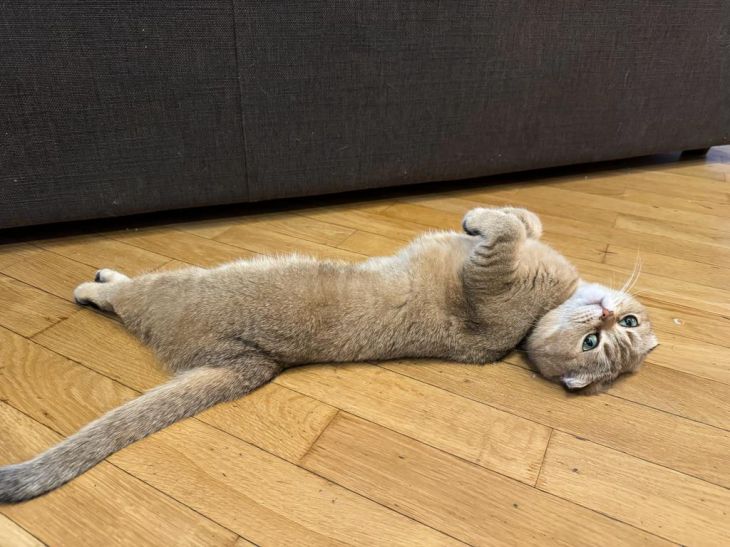Why does a cat roll on its back on the floor?
Cats often exhibit behavior that may seem strange to us.
One such example is rolling on the floor on its back. This behavior can be related to several factors, including play, well-being, and communication with the owner.
We will try to understand the reasons for this behavior of cats, relying on the knowledge of felinology and behavioral science in order to better understand our purring friends.
Happy
Cats roll over onto their backs when they feel completely safe and content.
This is a sign that they are not worried about anything and feel that the environment is safe enough for them to relax.

This often indicates that the cat is interested in interacting with a person. Not all cats like having their belly touched, even if they are lying on their back.
Other signs that a cat is likely happy include purring and head rubbing. Happy cats will usually groom themselves in front of their beloved owners and will sometimes follow them from room to room.
Estrus
Cats in heat roll around on the floor and rub against objects, spreading pheromones so that males know they are ready to mate. Cats in heat often howl and become very affectionate.
Cats reach sexual maturity between 4 and 6 months of age and can be spayed at 5 to 6 months of age.
Neutering has a number of health benefits, including reducing the risk of developing certain types of uterine, ovarian, and breast cancers. Neutering male cats will make little difference to their behavior, but may reduce the likelihood of aggression and marking in the house.
I ate catnip
Many cats enjoy sniffing catnip, and those that respond to it often enjoy rolling in it.
Catnip contains some compounds that trigger reproductive behavior in cats, which may explain why some respond to the grass by rolling on the floor.
Catnip typically lasts about ten minutes. Although it is not addictive, it quickly loses its effectiveness. Kittens often do not respond to catnip until they are six months old.
Marking territory
Cats have an excellent sense of smell, so they rely on it to identify people, locations, and other cats.
They have a sense of smell approximately fourteen times better than humans, thanks to millions of olfactory receptors in their noses.
They also have a second olfactory organ designed to detect pheromones, the vomeronasal organ. Cats have scent-producing glands around their whiskers, behind their ears, and between their paws.
When a cat rolls on the floor, it spreads its scent, which then creates a feeling of comfort.
When cats knead something with their paws, they are doing the same thing, spreading their pheromones, which they associate with feelings of love and security. Cats can mark in several ways, including scratching.
Itching
Cats sometimes roll around on the floor to relieve an itch they can't reach. If your cat is completely relaxed, there's probably nothing to worry about.
If your pet suddenly starts rolling and rocking back and forth, he may be suffering from itchy skin.
Itchy skin in cats can be caused by several things, ranging from allergies to infections. It is best to take your cat to the vet for an examination to prevent the allergies or infections from getting worse.
Previously, we talked about how to keep your four-legged friend clean during a walk .
